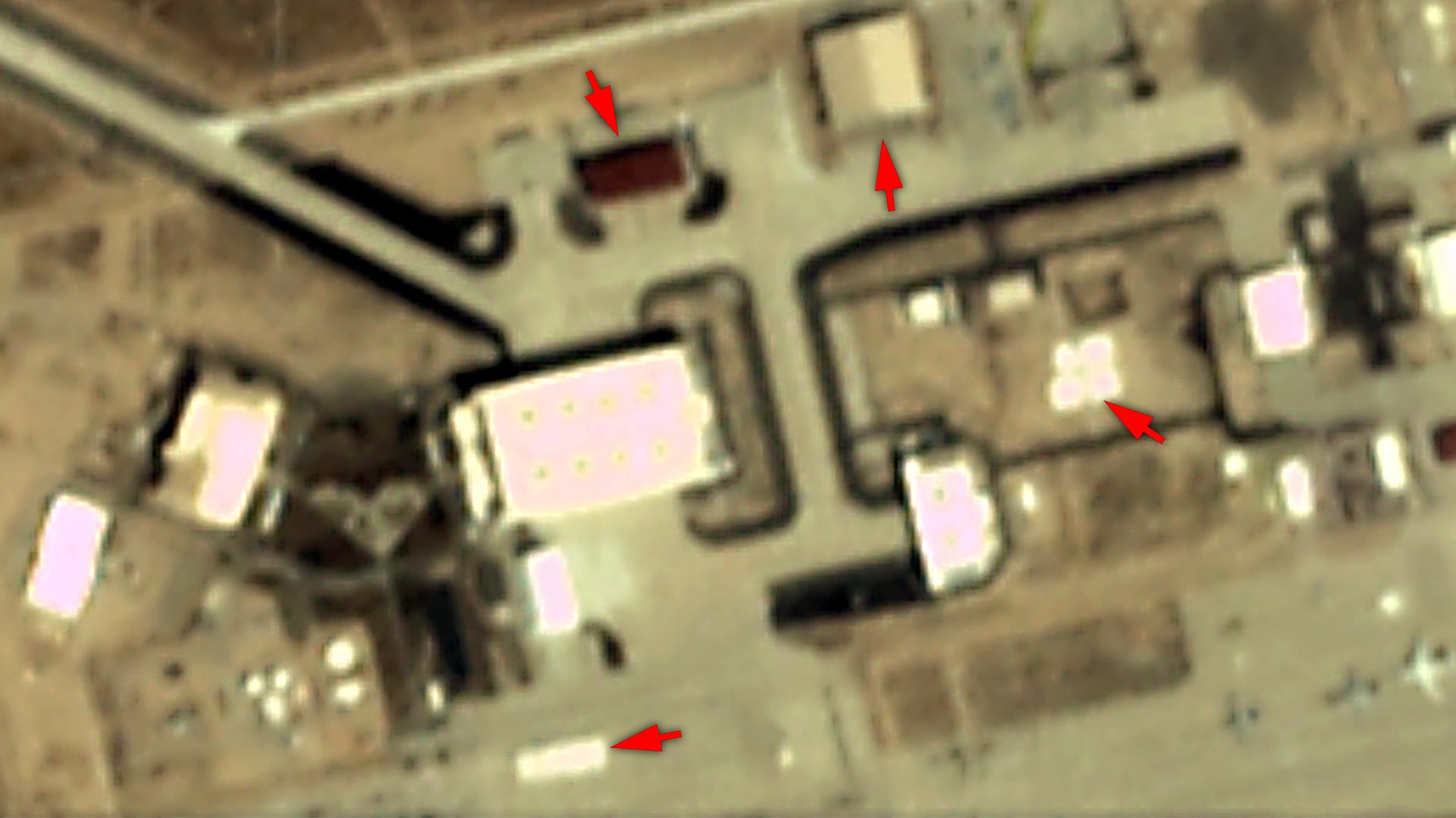The B-21 Raider is coming to Edwards Air Force Base, when exactly remains unknown, but recent satellite imagery shows a number of new structures have been built over the last eight months at the historic installation’s South Base facility. This is where the B-21 program, and potentially others that are part of a family of next-generation systems related to it, are set to be tested in the coming years.
This was the case as far back as 2011. During a visit to Edwards AFB at that time, I noticed the B-1B and B-52H bomber contingent had been relocated to the base’s main apron after calling South Base home for decades. This move was done to accommodate classified programs including the B-21. The B-2 test contingent at the base will presumably continue its life-long tenancy at South Base, as well.

The new additions to South Base (Birk Flight Test Facility) that began construction this year include a red-toned elongated shelter on the apron in front of huge hangar facility that once housed the YAL-1 Airborne Laser and other programs in the past. The structure measures roughly 220 feet wide and 100 feet deep—the perfect size to accommodate the stealthy B-21 or even a B-2 with plenty of room to spare. The original low-slung B-2 hangar is seen just to the right of the old Airborne Laser building in the satellite image below.


In addition, a new large aircraft shelter has been built on one of the bomber hardstands along South Base’s northern ramp. It is far larger than the aforementioned red colored aircraft shelter located just to its west, measuring roughly 220 feet long by 220 feet wide. Based on its unique beige color, this could be a cloth shelter similar to those often seen on American air bases in the Middle East and elsewhere.
Another structure has appeared to the south of the Airborne Laser hangar on the concrete apron that sits adjacent to South Base’s auxiliary runway. This elongated structure measures 200 feet by 60 feet.
Finally, a cluster of structures behind the B-2 hangar first appeared late last fall. It is not clear exactly what these are, but they could be a new fuel farm or liquid container system of some type based on their cluster-like arrangement. A set of new administrative buildings is also possible.

The sudden burst of construction on South Base is a very good sign that its new residents will arrive soon—that is if some of them aren’t already tenants. Beyond the B-21 Raider, the aircraft widely referred to as the RQ-180—a very stealthy high-altitude, long-endurance (HALE) drone with similar capabilities as the RQ-4 Global Hawk, but able to penetrate and persist deep in enemy territory—is also a prime candidate for being moved from Area 51 to Edwards as it transitions into an operational state.
It would make sense that the RQ-180 is part of the family of systems being developed to fly over long distances and survive far inside contested airspace alongside the B-21. In fact, it may have acted as a technology demonstrator for the B-21, at least to some degree. There are also plenty of other possible candidates that could be part, or one day become a part, of this clandestine family tree, as well. Also, it is worth noting that the Long-Range Standoff (LRSO) stealthy next-generation cruise missile is already part of the same family of systems and will be in need of testing in the next decade.
Regardless, we know for certain the main tenant will be the B-21, and that aircraft is supposedly undergoing assembly now, although The War Zone has long posited the status of the program is actually farther along than the Air Force’s messaging suggests. This could be via flight testing technology demonstrators or test articles to offset major risk, and/or by the B-21 itself being in a more mature state than acknowledged.

Still, we don’t know for certain when the aircraft will descend onto its new home, but its test team is already in place. To achieve an in-service date by the middle of the next decade, one would imagine that it would have to be within the next 24 months or so.
These are truly exciting times for Edwards Air Force Base and the flight test community there, as well as the Northrop Grumman team that is tasked with giving birth to the B-21 itself. Few defense programs are as critically important as Raider, especially considering the rise of a robust peer-state threat and the anti-access technologies and strategies potential foes are fielding at an alarming level. The B-21, and the family of systems that will likely support it, will be essential when it comes to reaching out across thousands of miles and kicking down the enemy’s door and putting even its most hardened targets at risk nearly anywhere around the globe.
Making all this a reality will start at Edwards South Base in the not too distant future.
Contact the author: Tyler@thedrive.com
